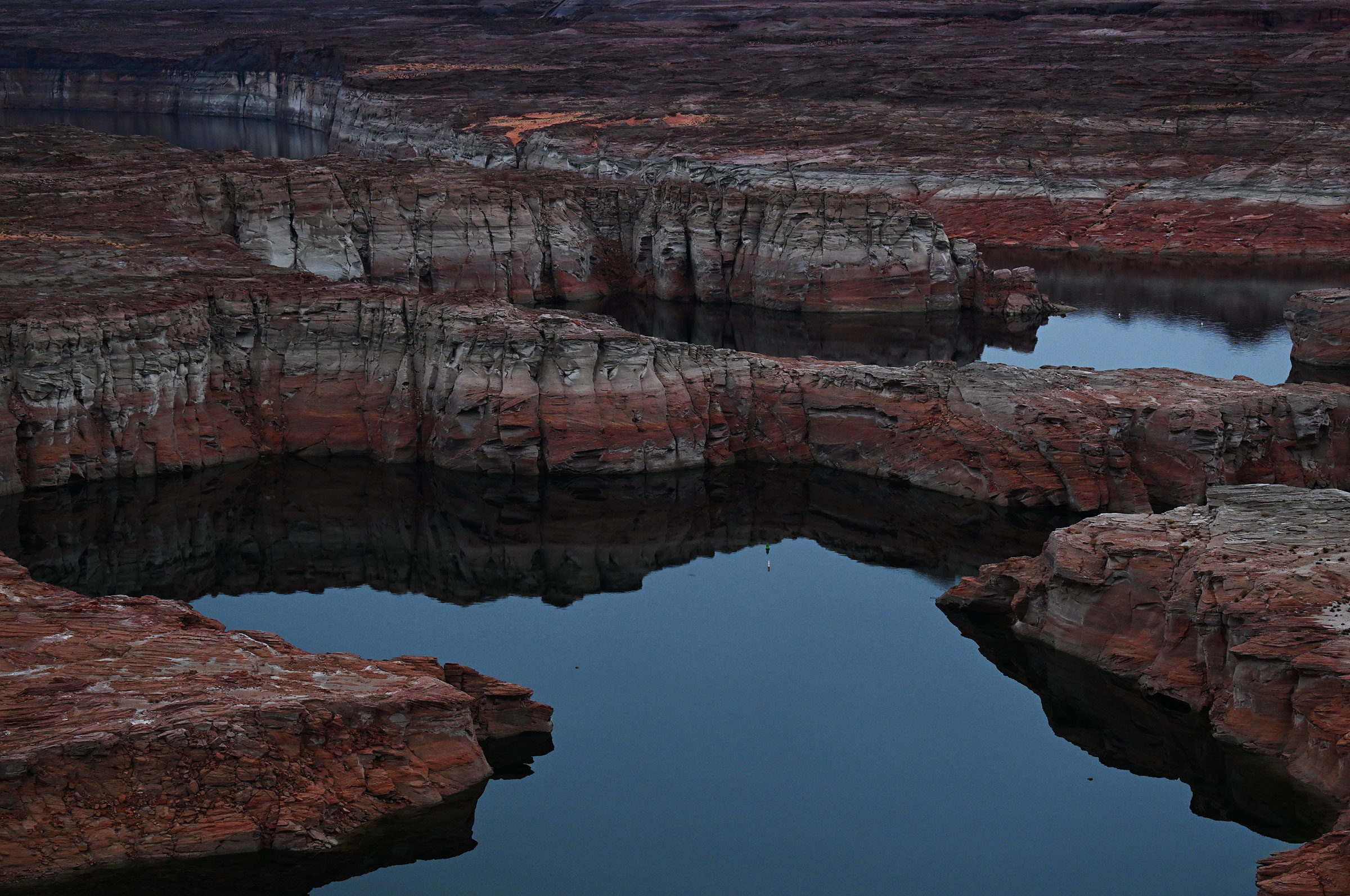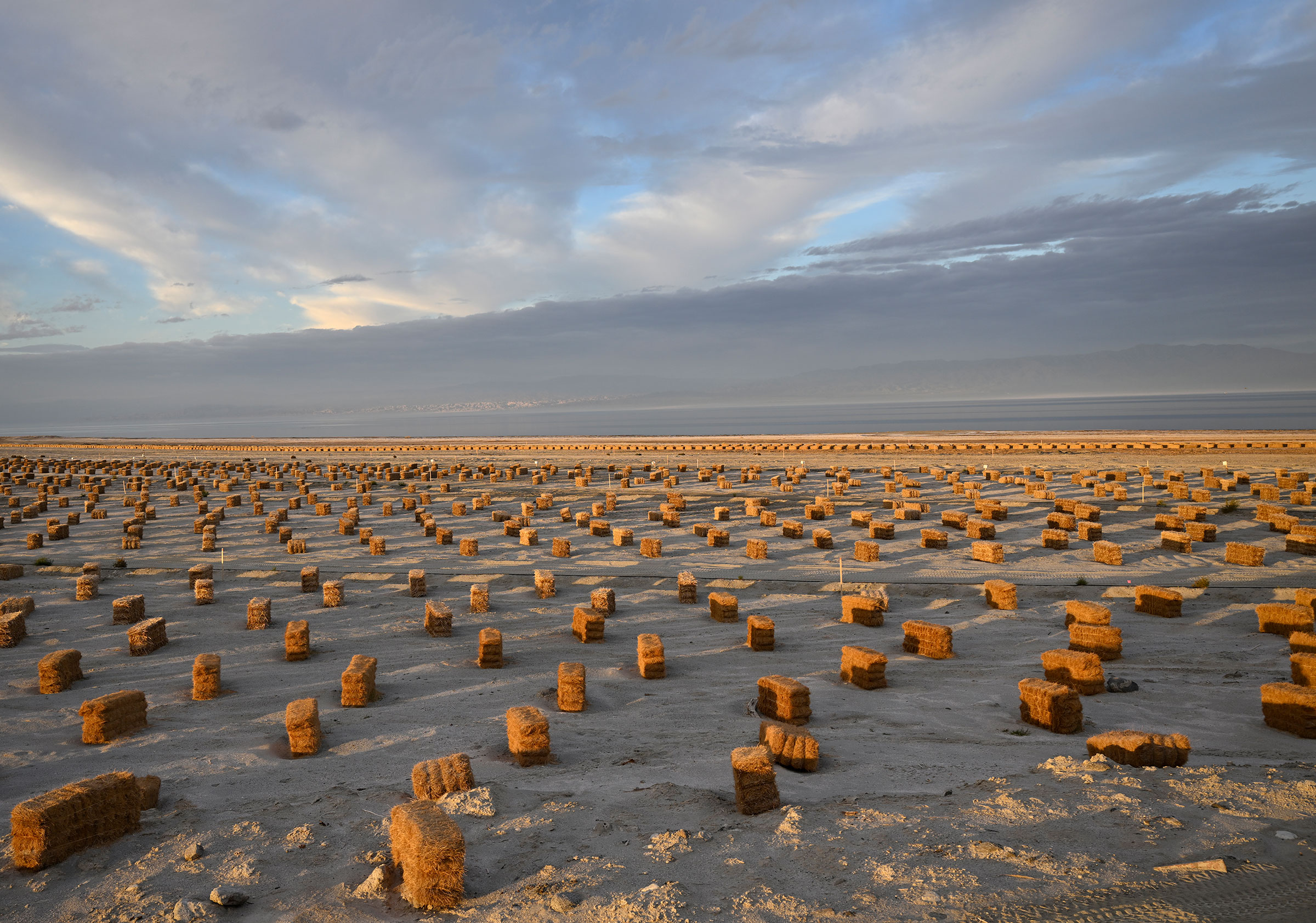
The Colorado River, lifeblood of the West, is out of time.
Seven U.S. states, plus two in Mexico, use water from the river, irrigating more than 5 million acres of crops and supporting more than 35 million people. We now take much more water out of the river every year than Mother Nature delivers, an imbalance resulting from political and legal decisions made a century ago and the increasing consequences of human-caused climate change, enabled by reservoirs that have provided a false sense of abundance and security.
Yesterday (Jan. 30), six of the seven U.S. states submitted a proposal to reduce annual Colorado River water use. The short-term goal is to halt the reservoirs’ precipitous decline, protect hydropower generation, and buy time to draft a long-term plan.
Starting in late 1999, the region entered an extraordinary, ongoing dry period, causing river flows to fall by 20%. At the end of the 20th century, the river’s massive reservoirs were almost full, an inheritance that water users have depleted year after year until they now face the prospect of not being able to run the taps or keep the lights on. So much water has been taken from Lake Powell and Lake Mead—the two largest reservoirs along the river—that refilling them would require storing every drop of runoff from at least three years of above-average precipitation, without any water use at all.

But just pointing to drought misses the fundamental problem: the rules governing Colorado River use give away more water than flowed down the river even in the wetter 20th century. These rules—a 19th century version of “finders keepers”—locked in an inequitable system of water rights in which the early “finders”—mainly farmers—took all they could while those who came late to the legal game often got nothing. In practice this means many Southwestern cities are first on the chopping block when it comes to water—that is, in years where there is less water than the current distribution rules account for, they curtail their use, deferring to those with more senior rights. Even worse, many Indigenous tribes, as well as fish and birds, lack any recognized legal rights to water at all.
Twenty years ago, as river flows declined, water managers began to work together to develop and implement a series of bold and innovative changes to the outdated rules. As a result, farmers and cities have improved the efficiency of their water use, growing more crops with less water than they did in the 20th century and successfully decoupling urban economic and population growth from water use. Most major western cities now use less total water than they did 20 or 30 years ago despite adding millions of people and billions of dollars of economic productivity.
These improvements in efficiency helped cut water use by about 7%, but they have not been enough to make up for the 20% drop in water supply.
Last June, Bureau of Reclamation Commissioner Camille Touton, the federal official charged with managing the river, called for extraordinary additional action, urging users to cut their water use by as much as one-third—on top of existing reductions—starting this year. Without these rapid and significant reductions, water levels could fall so low that dam operators could soon struggle to release any water at all, jeopardizing flows through the Grand Canyon, cutting water for downstream cities and farmers, and devastating an already struggling ecosystem. But doing so requires states and major water-rights holders to agree on a consensus plan that would impact them all. Negotiations blew past a first deadline in August; yesterday, six of the seven states submitted a plan foisting much of the responsibility on California, the state that did not sign. California has made a separate, much smaller offer, pointing instead to the existing rules and its senior water rights. But arguments about legal rights won’t mean much if there’s no water in the river.

Averting a crisis in the West is possible, but will require killing some sacred cows. The water going to grass, swimming pools, and golf courses will have to be cut. New housing will have to be denser and much more water efficient. More than half of Colorado River water currently irrigates crops fed to animals—a lot of those crops will have to go, reducing the amount of land and water in agriculture. As we struggle to bring demand back into balance with water supply, we must also accelerate efforts to cut emissions of greenhouse gases and slow the rate of climate change. The consequences of these actions, for farmers, farm workers, agricultural suppliers, communities, and for wetlands that rely on agricultural runoff, must be addressed.
That will require Congress to more forcefully recognize the scale of the challenge, and initiate an adequate federal response. Last year, Congress directed $4 billion to help solve the Colorado River crisis. That’s a start. But the fact of the matter is that the federal government is not nearly as willing to invest in preventative action that could forestall future disaster as it is to throw money to patch up problems that have already happened. For example, Federal Emergency Management Agency often spends tens of billions of dollars for hurricane disasters less damaging than a collapse of the Colorado River system would be. A commensurate investment will be required to avert the crushing economic and ecological impacts that would arise if water could not be delivered to Phoenix, Tucson, L.A., and San Diego, and if winter vegetables could no longer be grown with Colorado River water.
This year started off wetter than the past few years, but don’t be fooled. The crisis on the Colorado—and similar crises facing rivers around the world—will only get worse as the climate gets hotter and drier, and where antiquated, inequitable rules still govern water management. The extraordinary water conservation efforts of recent years are a start, but they are not enough to match the decline of water supply. Imposing more water reductions without taking action to address the source of the decline would be like building additional track in front of a runaway train without also jumping on board and applying the brakes.

More Must-Reads from TIME
- Donald Trump Is TIME's 2024 Person of the Year
- Why We Chose Trump as Person of the Year
- Is Intermittent Fasting Good or Bad for You?
- The 100 Must-Read Books of 2024
- The 20 Best Christmas TV Episodes
- Column: If Optimism Feels Ridiculous Now, Try Hope
- The Future of Climate Action Is Trade Policy
- Merle Bombardieri Is Helping People Make the Baby Decision
Contact us at letters@time.com